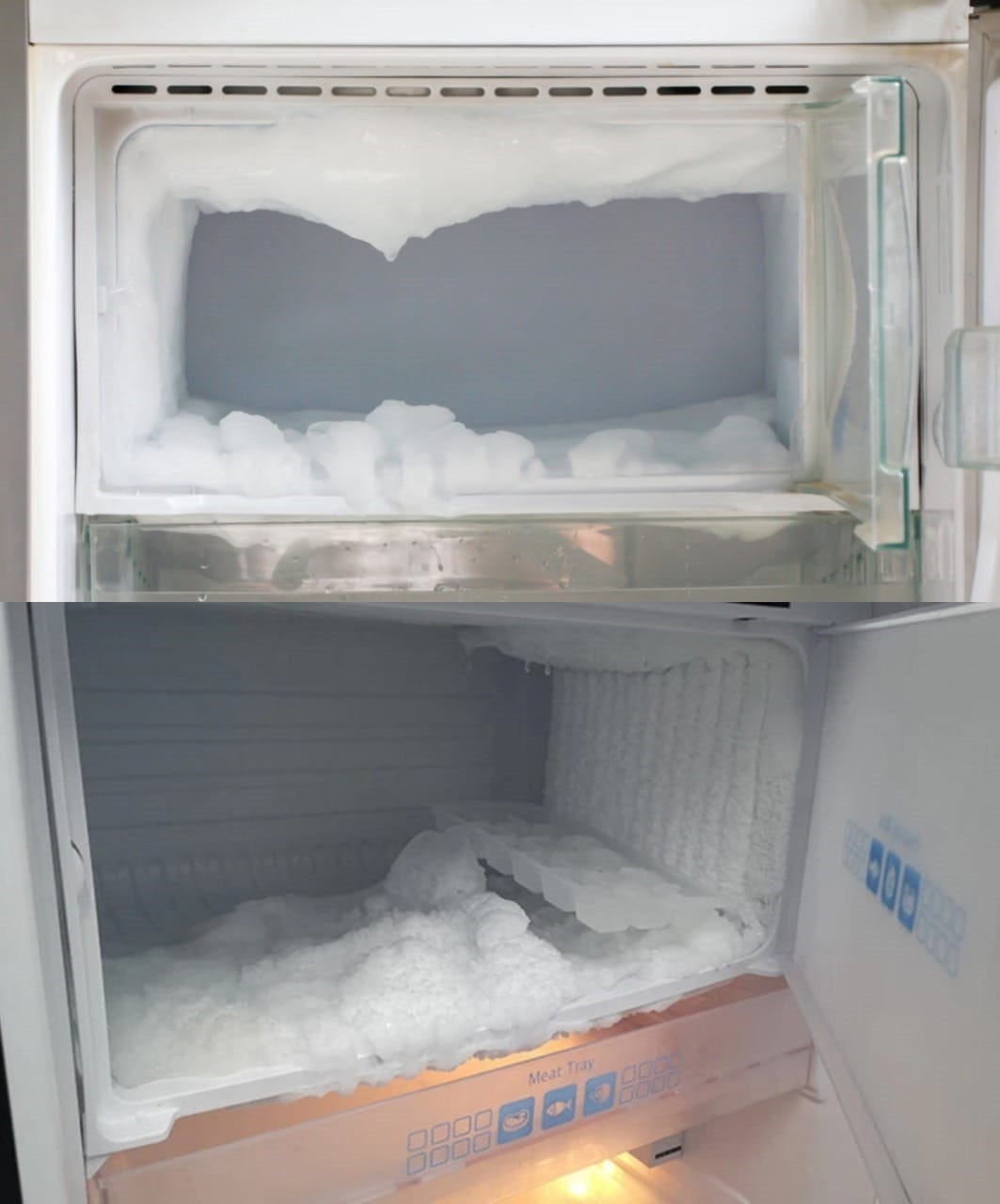ADVERTISEMENT
2. Use Hot Water to Melt the Ice
Hot water can be a great tool to help melt the ice in your freezer without the need to unplug it. The heat from the water helps to soften the ice, making it easier to remove. Here’s how to do it:
- Step 1: Fill a few large containers (such as bowls or pans) with hot water (not boiling, as it could crack the plastic or cause damage).
- Step 2: Place the containers in the freezer, positioning them close to the ice buildup. You can also place a few towels on the floor to absorb any drips.
- Step 3: Close the freezer door and let the hot water sit for about 15-20 minutes. The heat will soften the ice, making it easier to scrape off.
- Step 4: After 20 minutes, open the freezer door and use a plastic spatula or scraper to gently remove the melted ice. Be careful not to use metal tools, as they could damage the freezer.
If necessary, repeat the process with fresh hot water until the ice is completely melted.
3. Use a Hairdryer to Target Specific Ice Buildups
For areas with heavy ice buildup, a hairdryer can be a useful tool to focus on specific spots. This method is particularly helpful when you want to melt ice quickly in certain sections of the freezer. Here’s how to use a hairdryer for this purpose:
- Step 1: Set the hairdryer to a high-heat setting, and ensure it is plugged in and turned on.
- Step 2: Hold the hairdryer several inches away from the ice buildup, aiming the heat directly at the ice. Move the hairdryer around to ensure that the warm air is evenly distributed.
- Step 3: As the ice begins to soften and melt, use a plastic spatula or a towel to wipe away the water. Be cautious to avoid getting the hairdryer too close to any water to prevent electrical hazards.
This technique allows you to directly target and melt stubborn chunks of ice, making it a quick way to defrost problem areas without unplugging your freezer.
4. Place Towels to Absorb the Water
Once the ice begins to melt, you’ll be left with excess water pooling at the bottom of your freezer. To prevent any water damage or a mess, it’s important to absorb the water efficiently. Here’s how to do it:
- Step 1: Place several absorbent towels on the bottom of the freezer to catch the melting ice water. You can also use a sponge or mop to help absorb moisture.
- Step 2: As the ice continues to melt, periodically replace the towels or wring them out to ensure they’re still soaking up the water.
- Step 3: Once the ice has completely melted and the water has been absorbed, use a clean towel to dry the interior of the freezer thoroughly before replacing the food.
5. Maintain Freezer Temperature During Thawing
While thawing the freezer, it’s important to ensure that the temperature inside the appliance remains cold enough to keep your frozen food safe. Here’s what you can do:
- Step 1: Move any perishable food into a cooler with ice packs to keep it frozen while you thaw the freezer.
- Step 2: If you don’t have a cooler, try to limit the freezer door’s exposure to warm air by working quickly and closing the door between each step.
This will help prevent the food from thawing during the process and protect it from spoiling.
Additional Tips for Preventing Ice Buildup
Once you’ve thawed your freezer, you can take a few simple steps to help prevent excessive ice buildup in the future:
- Keep the Door Sealed: Always ensure the freezer door is properly sealed when closed. If the door isn’t fully closed, warm air can get in, leading to condensation and ice buildup.
- Defrost Regularly: If your freezer tends to accumulate ice quickly, consider defrosting it every 6-12 months to prevent a large buildup of ice.
- Use the Right Temperature: Make sure your freezer is set to the proper temperature (0°F or -18°C). Keeping it colder than necessary can cause more ice to form.
- Use a Freezer Mat: Some people place a freezer mat at the bottom of the freezer to catch any moisture and prevent ice from forming. These mats are easy to clean and can help reduce ice buildup.
Conclusion
Thawing a freezer doesn’t have to be a long, inconvenient process, and you don’t need to unplug it to get the job done. By using simple techniques like hot water, a fan, or a hairdryer, you can efficiently melt the ice and keep your freezer in good working condition. Not only will this save you time, but it’ll also help maintain the efficiency of your freezer and prevent any potential damage from excess ice buildup.
With these tips and tricks, defrosting your freezer will become a much easier and less time-consuming task, leaving you with more space, energy efficiency, and a cleaner appliance.
ADVERTISEMENT
